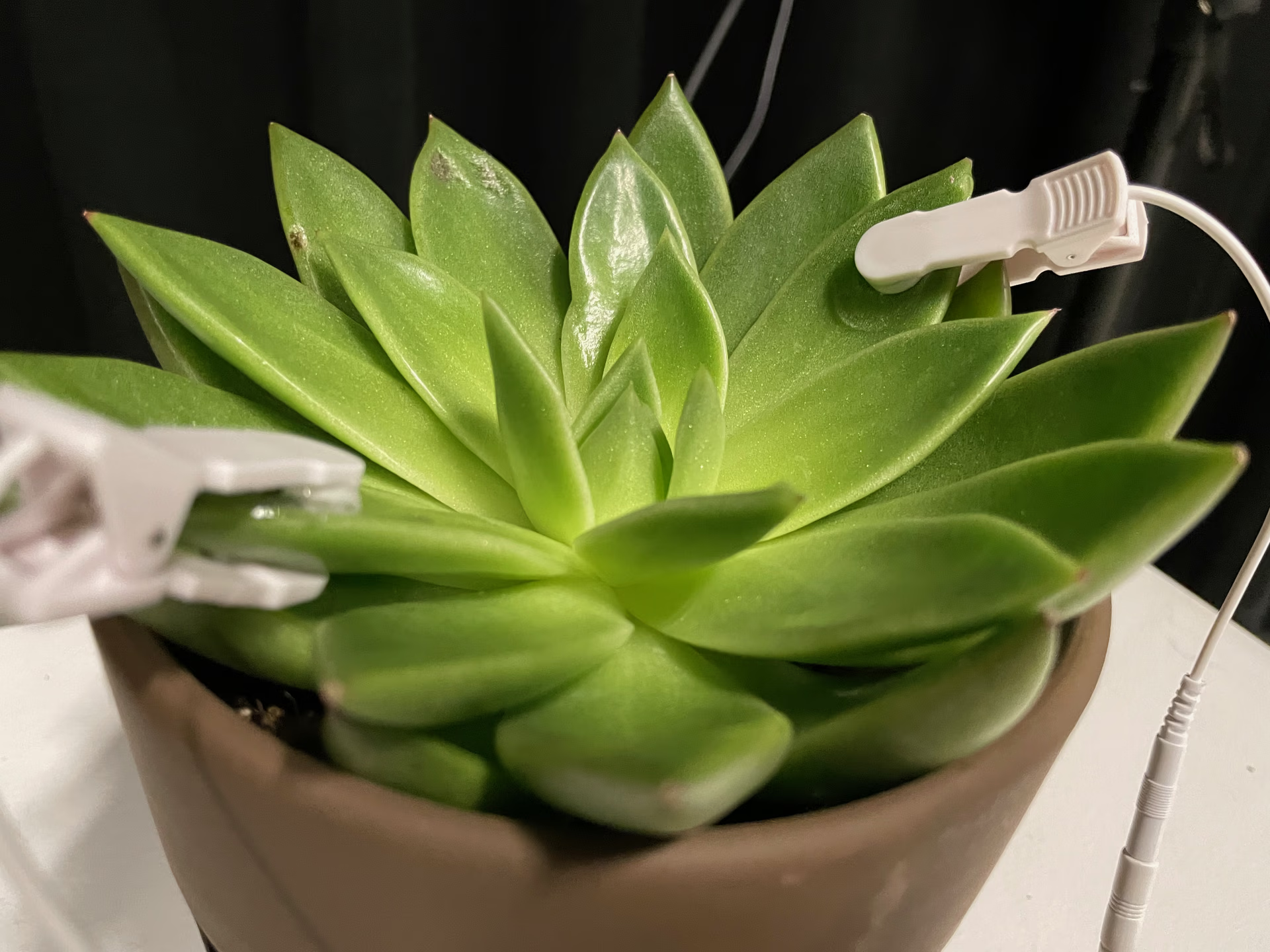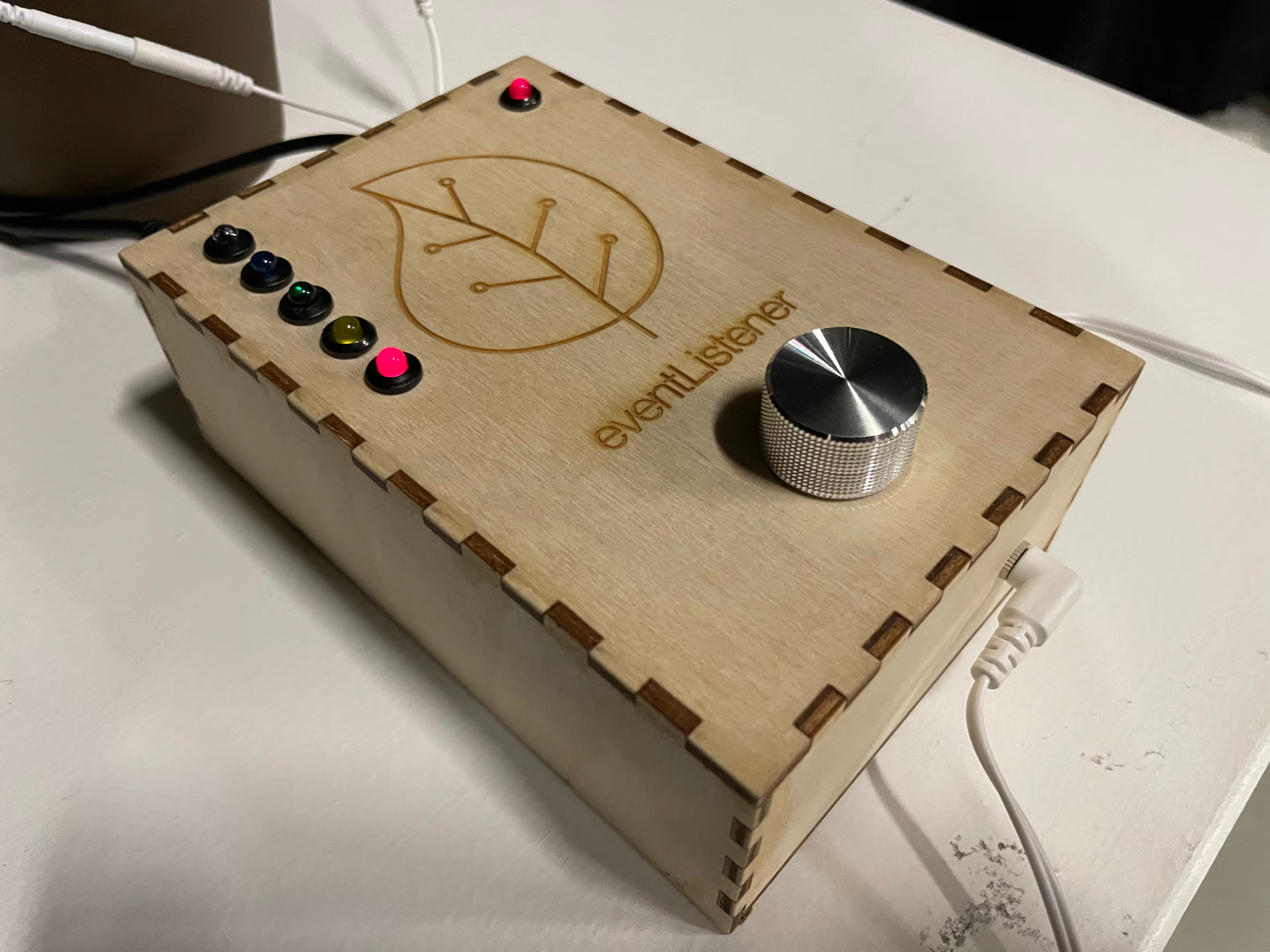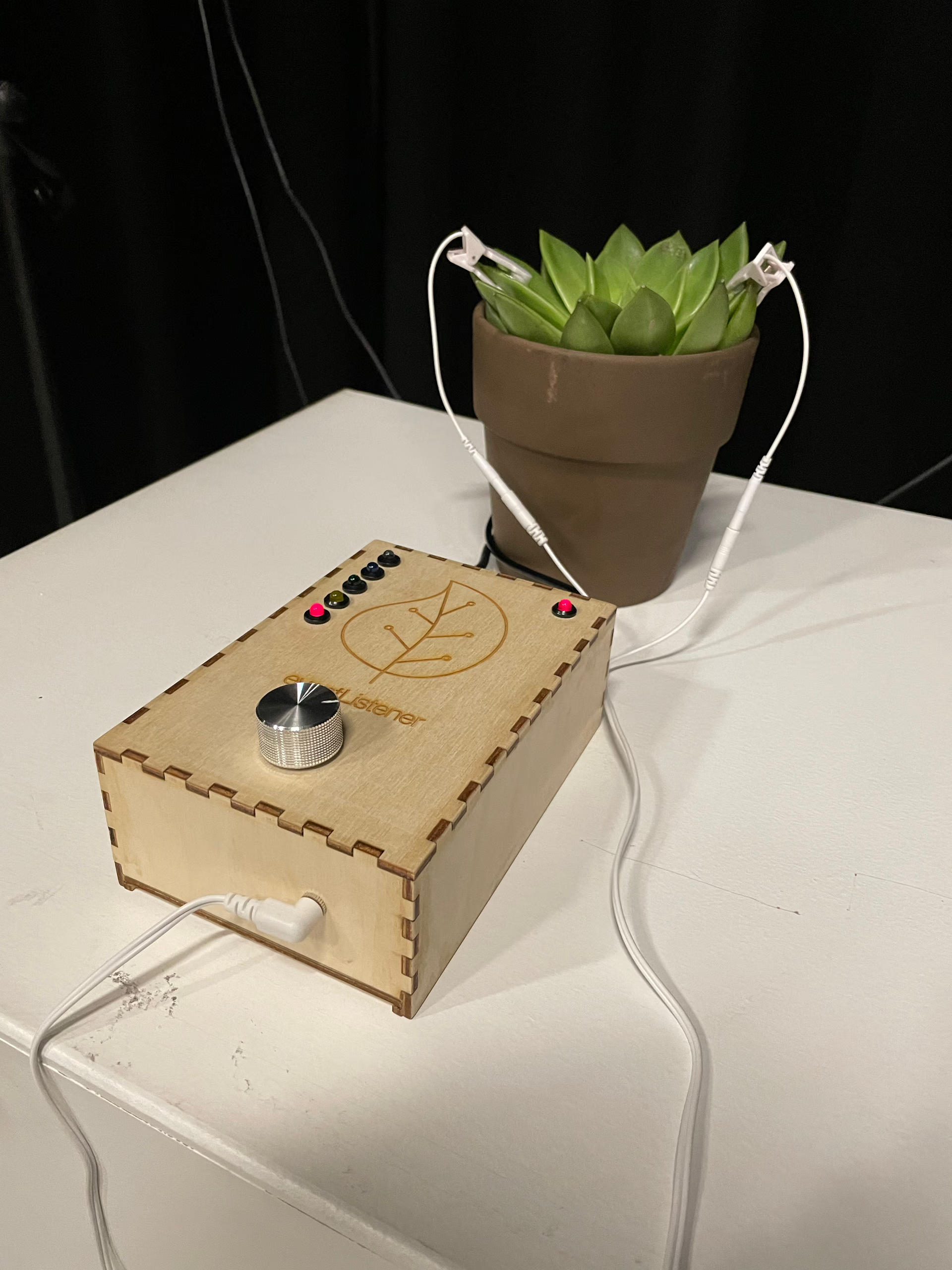Arduino Uno microcontroller, medical electrode clips, custom plywood enclosure.
eventListener is a plant biosonification device that monitors the naturally fluctuating electrical resistance of a living organism and converts the resulting data to a generative stream of MIDI music notes. In contemporary urban spaces, plants, much like the rest of ‘nature,’ are commonly relegated to the background—mere scenery upon the stage of our more mesmerising human endeavours. eventListener seeks to rebalance this fixation upon humanity and human-made (i.e. machine) systems by using such a system to direct attention to the ancient, more-than-human intelligences that have been present with us all along.
In the afterword of his twentieth anniversary edition of The Spell of the Sensuous: Perception and Language in a More-Than-Human World, ecophilosopher David Abram reflects on the explosion of ubiquitous computing that occurred soon after the book’s original publication in 1997, writing:
… the only things that now speak to us are our own artifacts, our humanly engineered appliances and automobiles, and so, despite the flimsy gesture toward a kind of magical reality, the fact remains that we’re still speaking only to ourselves. And so, after the initial novelty … there’s nothing here that can surprise us or yield a sense that we’re in contact with powers strangely different from ourselves.
Within the discourse surrounding generative art, a frequently evoked talking point is the notion of shared authorship between the artist and an autonomous system, a sort of displacement of the maker’s hand in the final output. In the context of machine-facilitated generative art, however, these autonomous systems are necessarily designed, shaped, and evaluated for usefulness and worth by human perspectives and sensibilities; we make the machine—unavoidably, for better or worse—in our image (as biases within A.I. systems have made especially apparent). From our position within a vibrant planetary ecology, brimming with self-organising complex systems and nonhuman sentience from which there is still much to learn, might we begin to reimagine our technologies to stop speaking only to ourselves? This is eventListener’s aim: to use the machine as a bridge to nonhuman dialogues; to honour, and invite communion with, a sensate intelligence distinctly different from our own.
Using an Arduino Uno microcontroller and medical electrode clips, fine fluctuations in the bioelectric resistance of a potted plant become the autonomous system in the generative chain. These fluctuations are then converted into MIDI notes, mapped within the Arduino code to a chosen musical scale, and subsequently fed into a software synthesiser (Roland JV-1080), a reverb plugin (Valhalla Supermassive), and finally, a stereo speaker system. The internal state of the plant, otherwise obscured from our perception, is rendered in a language more legible to us; factors such as environmental temperature, humidity, light, our presence and proximity as onlookers, and even touch, affect the output of the system and attest to the plant’s distinctive sentience. It is this sentience, this entanglement with surrounding conditions, that inspires eventListener’s name: what usually refers to a computation procedure that awaits a particular event (such as a mouse click) before executing a related codeblock is herein repurposed from its machine context.
eventListener emerges from a diverse ecosystem of plant biosonification art, such as the mycelial work of Toronto-based artist Tosca Terán, as well as English artist Mileece’s PiP (People’s Interface for Plants). Further, this project would not have been possible without the generosity of Sam Cusumano (Electricity for Progress) and his open-source biodata sonification codebase and breadboard design.


